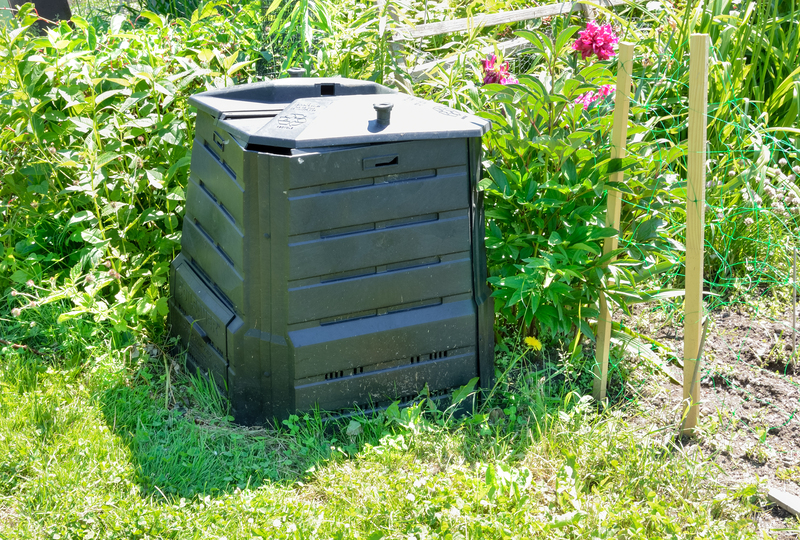Innovative Recycling Solutions for Pots and Pans
When your favorite cookware becomes scratched, warped, or outdated, don't just throw it away! There are inventive ways to recycle, upcycle, and repurpose pots and pans to help protect the environment and reduce waste in landfills. In this comprehensive guide, we explore innovative recycling solutions for pots and pans, offering practical tips, eco-friendly ideas, and insights into sustainable practices for managing your old cookware.

Why Recycle Old Pots and Pans?
Globally, millions of cookware pieces end up in landfills every year, contributing to environmental pollution and resource wastage. Most pots and pans are made of metals like aluminum, stainless steel, or copper--materials that are highly recyclable. Recycling cookware not only conserves raw materials but also saves energy and reduces greenhouse gas emissions associated with manufacturing new products. By learning the best practices for eco-friendly cookware disposal, we can all make a measurable difference.
The Challenges of Recycling Cookware
Not all household recycling programs accept pots and pans, and the mixed materials in cookware--such as non-stick coatings, plastic handles, or glass lids--can complicate the recycling process. Thus, inventive recycling and upcycling methods are needed to effectively deal with old pots and pans.
How to Prepare Pots and Pans for Recycling
- Remove Non-Metal Parts: Detach plastic or wooden handles and glass lids, as most recycling centers only accept pure metal items.
- Clean Thoroughly: Wash away grease, food scraps, or residue for smooth processing during recycling.
- Separate by Metal Type: If possible, categorize your cookware by material--aluminum, stainless steel, or copper--for more effective metal recycling solutions.
- Check Local Guidelines: Contact your municipality or local recycling center to confirm if they accept kitchenware and their specific preparation requirements.
Innovative Recycling Solutions for Pots and Pans
1. Scrap Metal Recycling Centers
The most straightforward method for recycling pots and pans is to take them to a scrap metal facility. These centers specialize in processing metal items, transforming them into raw materials for new products. Whether your cookware is stainless steel, aluminum, or copper, recyclers melt these metals to create everything from car parts to construction materials.
- Contact your local scrap metal recycler or check their website for guidelines.
- Deliver items during designated drop-off hours.
- Some centers may even pay for valuable metals like copper.
2. Specialty Recycling Programs
Several organizations and companies provide specialty recycling programs for cookware. For example, brands like TerraCycle and some major kitchenware manufacturers participate in take-back schemes for pots and pans, ensuring safe and responsible disposal, even of items with non-stick coatings or mixed materials.
- Mail-In Services: Some companies let you mail old cookware for recycling--a great option if local facilities don't accept kitchenware.
- Retailer Drop-Offs: Large retailers sometimes host collection bins or events for old cookware recycling. Contact stores in your area for details.
3. Creative Upcycling and Repurposing Ideas
If recycling is not readily available, upcycling is an innovative solution for old pots and pans. Transforming cookware into decorative, functional, or artistic items not only keeps them out of landfills but can also add personality to your space.
Upcycling Project Inspirations:
- Planters and Flower Pots: Drill a drainage hole and repaint to create quirky, rustic garden planters.
- Wall Art or Clocks: Old frying pans can be mounted as chalkboards, clocks, or kitchen-themed wall art.
- Storage Solutions: Deep pots and saucepans make excellent storage bins for utensils, office supplies, or even small toys.
- Bird Feeders and Baths: Suspend or mount used pans outdoors for eco-friendly wildlife feeders or birdbaths.
Tip: For inspiration, search platforms like Pinterest or YouTube for DIY cookware upcycling ideas!
4. Donating Usable Cookware
Before recycling, assess whether your cookware is still usable. Many charities, shelters, and thrift stores accept gently used pots and pans. Donation not only extends the lifespan of cookware but also supports communities in need--a win-win sustainable choice.
- Contact local charities to verify donation guidelines.
- Only donate clean, safe, and functional cookware.
- Consider school or community kitchen programs as potential recipients.
Emerging Technologies in Cookware Recycling
As sustainability gains traction, new innovations in cookware recycling are reshaping the industry. These emerging technologies improve the recycling rates and quality of materials retrieved from old pans and pots. Here are a few cutting-edge developments:
- Smart Sorting Systems: Advanced recycling centers now use AI-enabled sorting belts and sensors to accurately separate materials by metal type and remove non-metal parts, optimizing the recycling stream.
- Nonstick Coating Recovery: Research into pyrolysis and solvent-based processes helps safely strip and recover PTFE or ceramic coatings from pans, making metal reclaim more efficient and eco-friendly.
- Circular Manufacturing: Some cookware brands are pioneering closed-loop manufacturing, where old pots and pans are directly reprocessed into new products, dramatically reducing raw material demand.
The Global Impact of Cookware Recycling
Globally, innovative pots and pans recycling has a significant environmental impact:
- Reduces Landfill Waste: Diverting millions of tons of metal waste from landfills each year.
- Conserves Natural Resources: Reduces the need for mining and refining new metals.
- Supports a Circular Economy: Keeps valuable materials in use for as long as possible.
In addition, many communities worldwide are adopting regulations and incentives to encourage better metal and kitchenware recycling, making it easier for consumers to dispose of old cookware responsibly.
Tips for Choosing Sustainable Cookware
To minimize future waste, consider sustainability when investing in new kitchenware. Here's what to look for:
- Durable Materials: Opt for stainless steel, cast iron, or copper pans known for longevity and recyclability.
- Removable Handles: Choose pans with detachable handles to ease recycling later on.
- Reputable Brands: Some brands offer take-back programs or use recycled metals in their production process.
- Repairability: Consider cookware that can be refurbished or repaired rather than replaced.
By prioritizing these features, you contribute to sustainable cookware recycling solutions and reduce landfill-bound waste in the long run.
Frequently Asked Questions about Pots and Pans Recycling
- Can I put pots and pans in my curbside recycling?
*Usually not.* Most curbside programs don't accept large metal items or mixed-material cookware. Use drop-off centers or specialty recyclers instead. - What should I do with nonstick pans?
Check with your local recycling facility. If they don't accept coated pans, use a mail-in program specializing in cookware recycling. - Is it better to donate or recycle?
If the pan is still usable, donation is best. For damaged or unusable cookware, recycling is the more sustainable option. - What about pots and pans with plastic handles?
Remove handles before recycling metal pans. The plastic and metal must be processed separately.

How to Find Local Pots and Pans Recycling Options
Wondering where to recycle your old pots and pans? Here's how you can find the right solution in your area:
- Check Your Municipality Website: Most cities have recycling resources or guides listing accepted household items and drop-off locations.
- Use Online Directories: Services like Earth911 or Recycling Locator can pinpoint the nearest metal recycling centers or specialty recyclers for cookware.
- Ask Local Scrap Yards: Call or visit nearby scrap metal recyclers for their specific policies on kitchenware.
- Visit Large Retailers: Some home goods or kitchen retailers offer periodic recycling events for old cookware--watch out for promotions and community events.
Conclusion: Redefining Kitchenware Disposal
Innovative recycling solutions for pots and pans are essential for building a sustainable future. By adopting creative upcycling, using advanced recycling technologies, and making greener choices when purchasing cookware, everyone can play their part in supporting a circular economy. Whether you drop off your old pans at a scrap metal center, participate in a brand's return program, or repurpose them into decorative planters, your actions help conserve resources and protect the planet.
Next time your favorite saucepan reaches the end of its life, remember--throwing it away should be the last resort. With so many eco-friendly cookware recycling solutions at your fingertips, you can keep your kitchen--and the earth--greener for years to come.
